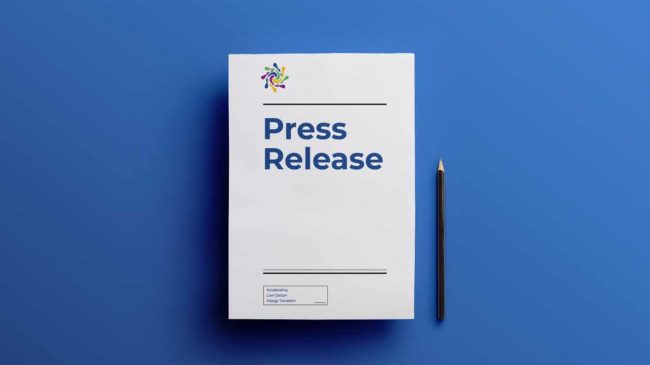Jambi, November 28, 2023 – Local governments play a significant role in promoting the use of renewable energy in their respective regions. This is crucial in achieving the national target for renewable energy mix. Jambi is one region that aims to achieve a renewable energy mix target of 24 percent by 2025 and 40 percent by 2050. The Institute for Essential Services Reform (IESR), a leading think tank in Indonesia, underlines the importance of accelerating solar energy utilization in Jambi Province as a concrete step in achieving the regional renewable energy mix target and reducing greenhouse gas emissions contributing to the climate crisis.
Based on IESR’s study titled Beyond 443 GW: Indonesia’s Infinite Renewable Energy Potentials, Jambi has 281.5 GWp of solar energy potential. Meanwhile, based on the Regional Energy General Plan, Jambi has a solar potential of 8,847 MW. However, the installed capacity of solar power plants is only around 0.68 MW as of 2022.
Marlistya Citraningrum, Program Manager of Sustainable Energy Access, IESR, mentioned that solar energy is democratic energy available throughout Indonesia. In addition, solar energy technology is currently relatively easy to access, with increasingly affordable investment costs.
“We believe solar energy is a strategic solution to mitigate the climate crisis. Rooftop solar power plants offer several benefits, such as increasing the renewable energy mix and reducing greenhouse gas emissions through the cooperation of various parties. They provide a renewable source of electrical energy without the need to build large-scale power plants. This opens up business opportunities in the green jobs sector and encourages increased competitiveness of the solar industry in energy. We hope that Indonesia will not only become a market for the solar energy industry but also spark a green and circular economy,” Marlistya said at the Jambi Government Forum, Implementation of Solar Energy in Jambi Province held on Tuesday (28/11).
Marlistya invited all stakeholders to proactively participate in accelerating solar energy utilization in Jambi Province. She emphasized five things that can be done to spur the adoption of solar power at the regional level. Firstly, clear rules, regulations, and policies should be implemented effectively. Secondly, there should be encouragement for rules, policies, and appeals. Thirdly, good practices in solar energy utilization should be shared and multiplied. Fourthly, access to information on renewable energy, particularly solar energy, should be improved. Lastly, incentives and facilitation, along with increased financing opportunities, should be provided to support the adoption of solar energy.
Nanang Kristanto, Sub-Coordinator of RUEN Implementation Monitoring, National Energy Council, explained that Indonesia is currently updating Government Regulation No. 79/2014, which pertains to the National Energy Policy (KEN). The purpose of this update is to ensure that energy policies are in line with climate change policies. It is predicted that by 2030, the energy sector will be the second largest contributor to emissions, following the forestry sector.
“The KEN Draft Government Regulation (RPP) has undergone updates, which include the consideration of achieving Net Zero Emission (NZE) by 2060. The primary energy mix in 2060 is planned to comprise 70-72% renewable energy and 28-30% non-renewable energy. The supporting policies for this goal are explained in detail in each article, which has increased the total number of articles in the KEN RPP,” said Nanang.
Nanang highlighted five important roles of regions in the energy transition towards NZE in the KEN changes. First, all activities related to the transition must be centered in provincial and district/city areas. Secondly, derivative activities for energy transition must be implemented according to the authority of the regions. Thirdly, the parts should receive funding from the central government or the private sector to aid in the transition. Fourthly, the areas must have available human resources to support the transition’s new technologies. Finally, it is important to socialize with the community as energy users to implement the transition effectively.
Anjas Bandarso, Energy Policy Analyst from the Directorate General of Regional Development of the Ministry of Home Affairs, explained the strengthening of provincial authority in utilizing renewable energy in the regions through Presidential Regulation (Perpres) Number 11 of 2023 concerning Additional Concurrent Government Affairs in the Energy and Mineral Resources (ESDM) Sector in the New Renewable Energy Sub-Sector. The regulation also optimizes coordination between the central government and regional governments.
“We provide new authority for provincial governments to manage biomass or biogas, both as energy and as a substitute fuel for liquefied petroleum gas (LPG). Then, the management of various renewable energies as well as the implementation, guidance, and supervision of energy conservation,” said Anjas.
Anjas hopes that there will be mutual support between the central and regional governments, strong political commitment, and real concern at the regional level to encourage the achievement of renewable energy targets.

